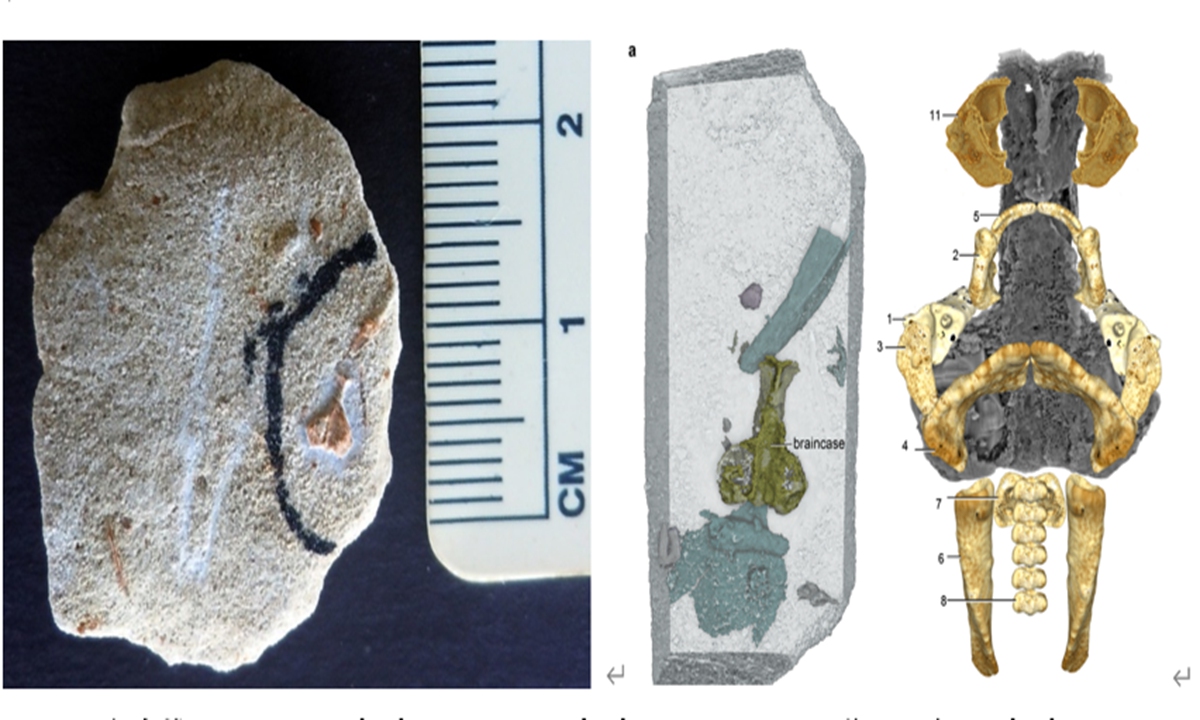Chinese and Australian researchers find prehistoric fish fossils outside Scotland for 1st time, pushing back its record by 10m years

Picture
A China-Australia joint research team has reported fossils of a prehistoric fish species, only the second known of the mysterious early vertebrate genus Palaeospondylus, the first of which was discovered in northern Scotland. This discovery will facilitate understanding the evolution of early vertebrates.
They named the newly discovered species Palaeospondylus australis. The fossils were unearthed in the Georgina Basin in Queensland, Australia. The strata date back to the Emsian stage of the Early Devonian period, approximately 400 million years ago, the Global Times learned from the team led by Lu Jing from the Institute of Vertebrate Paleontology and Paleoanthropology, Chinese Academy of Sciences.
The research was published as a cover study in the May issue of the National Science Review.
This discovery not only pushes back the genus' age record by about 10 million years but also provides crucial evidence for solving the longtime mystery of the phylogenetic position of Palaeospondylus. The relevant research findings were published as a cover article in the National Science Review journal in May 2025.
Queensland is renowned for preserving large vertebrate fossils, such as giant sauropod dinosaurs like Rhoetosaurus from the Jurassic period and Wintonotitan from the Cretaceous period. The latest discovered fossils are one of the smallest vertebrates ever discovered in the region.
The fossils of the Palaeospondylus australis were found in a small limestone outcrop associated with jawless fish, jawed placoderms, early sharks, acanthodians and various bony fish, outlining the rich and diverse ecology of the marginal sea in the Early Devonian period.
Palaeospondylus gunni was first discovered in Scotland in 1890. Due to its unique and ambiguous morphological features, it has always been regarded as one of the "most mysterious early vertebrates." Although thousands of specimens have been found in Scotland, its taxonomic status has long been controversial because of the flattened bone structure and unique histology. It has been classified into various groups, ranging from jawless fish to early jawed fish and even the ancestors of tetrapods (four-limbed vertebrate animals).
The fossils discovered in Queensland, although fragmented, show a three-dimension braincase and mineralized tissue structures after acid treatment. The research team used high-precision CT scanning and 3D reconstruction to comprehensively restore the braincase structure of Palaeospondylus for the first time, including three and a half semicircular canals and nerve channels, providing key morphological evidence for determining its phylogenetic position.
Based on the latest morphological data, phylogenetic analysis shows that Palaeospondylus is more likely to belong to the chondrichthyan lineage, such as sharks and rays, rather than tetrapods as hypothesized in some early studies. Their honeycomb-like tissue and elongated dorsal fontanelle support that it was a member of early jawed fish.
The discovery of the new species not only reveals an expanded geographical and stratigraphic distribution range of the Palaeospondylus, but also suggests that there may have been more complex geographical connections and dispersal routes among early vertebrates on a global scale, which is of great scientific significance.

